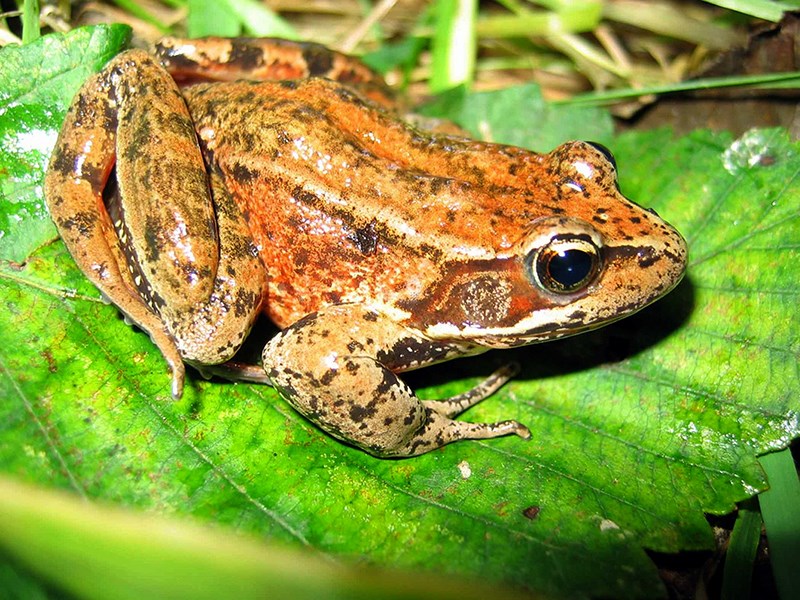The Editor,
Pamela Zevit, a professional biologist from the South Coast Conservation Program (SCCP), spoke with students at Anmore’s Eagle Mountain middle school in February about local species at risk. Many students became concerned when they found that roads — such as the proposed David Avenue extension through Bert Flinn Park — can severely impact sensitive habitat for local species at risk, like the northern red-legged frog.
Three of the students began a petition on change.org, titled “Save the Red-Legged Frog.” So far, it has 344 signatures. At 500 signatures, the students will present the petition to city of Port Moody and village of Anmore. They hope creative development planning will help to prevent the frogs — found only in the Pacific Northwest — from disappearing locally. The students want to ensure that municipalities understand what is important to their residents.
On their Weebly blog, they say they have good reason to believe the frog may become extinct in Bert Flinn Park if a road is built through the middle of its habitat; they feel it is vital to raise awareness.
During the past four years, biologist Ann Marie Oktaba, an Anmore resident who has a small breeding pond on her property for the frogs, worked to increase awareness about their breeding habitat. She encouraged several Anmore residents to work with the SCCP’s nature stewards program to help enhance their backyard habitat.
When the SCCP toured their properties, further sensitive habitats for the frogs were identified. “The idea to protect local species at risk is gaining momentum and it’s great to see the community come together to save a species that needs our help. It’s so inspiring to see others take action, especially young students who have no ulterior motives except to see that these native frogs continue to have a home,” said Oktaba.
In Canada, northern red-legged frogs are found only on the west coast of B.C. and, like many other species at risk, are under immense pressure from development, invasive species and human activity. According to Zevit, more than 70% of wetlands on British Columbia’s south coast have been lost over the past century. Of the wetlands left, many local native frog populations are out-competed for habitat by the larger, introduced American bullfrog and green frog.
The bullfrogs also prey on native frogs, reducing their numbers. The last remaining strongholds for northern red-legged frogs in Metro Vancouver may be small wetlands: pocket bogs, marshes and swamps in and around large urban forests and streams.
If children recognize the value of protecting healthy native frog populations in places like Anmore and Port Moody, shouldn’t we?
To support the students in their quest to protect our frogs, sign their petition at www.savetheredleggedfrogbc.weebly.com.
To find out more about what to do to protect local species at risk, visit the South Coast Conservation Program online at www.sccp.ca.
Glenna Barron, Anmore
Editor’s note: This letter was originally published last month at anmoretimes.com.



